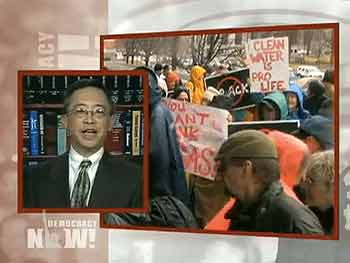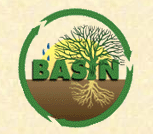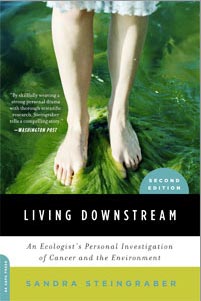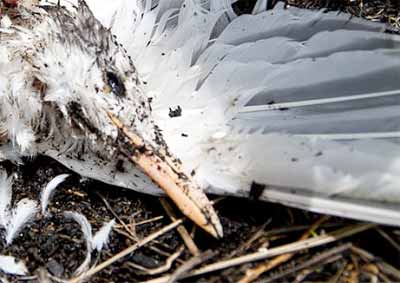Experts
On 9-15-10, attending the EPA meeting on hydraulic fracturing for shale gas, professor of ecology and environmental biology, independent scientist Robert Howarth, Ph.D.,

told a news conference that natural gas extracted from shale is nearly as dirty as coal or perhaps even dirtier in terms of greenhouse gas footprint...
good grief:
...Our public comment to EPA was, in part, as follows:
Based on what we know so far, the EPA should order immediate suspension of high-volume hydrofracking until your study is complete. Let science guide policy. Otherwise we’re conducting a massive human, animal and earth experiment.
The gas will be there; it's not going away. Ideally any further carbon extraction at all should be banned while we accelerate development of sustainables but since that's probably not in the cards politically, it's imperative we at least do everything we can to reduce the harm we are doing to ourselves and our environment by extending our carbon binge in shale gas extraction. As others have mentioned,
I especially urge you to incorporate into your study the research of Prof. Robert Howarth and his team at Cornell on the methane greenhouse footprint that makes shale gas look nearly as dirty as coal if not even worse.
Visit Toxics Targeting for more information.
Ignitable Drinking Water From a Well in Candor, New York, Located Above the Marcellus Shale Formation (Spill #: 0811696)
See Walter Hang's letter to NYS DEC Commissioner Pete Grannis, 4/2/10.
Opens with a great critique of the word "sustainability".
We followed a trail of yellow liquid draining from the back of the site downstream past a neighboring industrial bakery and into the Edison Glen and Edison Woods residential developments.
There we videotaped a child playing in the poisoned stream who told us it was a good place to hang out and look for frogs and turtles. I subsequently found out that the vacant Superfund lot was a playground for local children, the chemical lagoons were their wading pools, and adults routinely scavenged materials from the site.
Bob [Spiegel] called the Environmental Protection Agency (EPA) and when their response seemed to be limited to posting a few warning signs, he and his friend rented a movie theatre and showed their videotapes to increasingly agitated crowds. “We scared the hell out of everybody,” Spiegel says. The EPA immediately scheduled a public meeting.
--Molly Ivins’ Bushwhacked (Chapter 3)
New Jersey non-profit that among other activities, helps citizens engage in and advocate for the environmental well-being of their communities.
See: How to apply.


Efforts by lawmakers and regulators to force the federal government to better police the natural gas drilling process known as hydraulic fracturing, or "fracking," have been thwarted for the past 25 years, according to an exposé in the New York Times.
Studies by scientists at the U.S. Environmental Protection Agency on fracking have been repeatedly narrowed in scope by superiors, and important findings have been removed under pressure from the industry.
The news comes as the EPA is conducting a broad study of the risks of natural gas drilling with preliminary results scheduled to be delivered next year.
Joining us is Walter Hang, president of Toxics Targeting, a firm that tracks environmental spills and releases across the country, based in Ithaca, New York, where fracking is currently taking place. [includes rush transcript]
Gas drilling brings with it the need to inject methane gas into the ground to store it. Although gasoline and natural gas are chemically unrelated, the storage of both natural gas and fracking brine in underground rock formations the potential spills associated with trucking the waste and storing it in open plastic lined pits may contribute to the contanimation of well water.
The secret formula of the fluids used by the gas industry have made it hard for researchers to do the type of analysis Joe Ryan has done about gasoline.
Dr. Joe Ryan is with the Environmental Engineering Program in the Department of Civil, Environmental, and Architectural Engineering at the University of Colorado. He discusses benzene and its potential to pollute ground water in even small amounts.
At a July 9, 2010 EPA meeting in Texas, as reported by KERA. North Texas Public Television and Radio, Tim Ruggiero says he's living proof the state isn't protecting the public.
"I am one of those cases of contaminated drinking water. It's why I'm here tonight," Reggiero told the EPA.
Ruggiero says he tested his water just before and after gas producers began drilling on his property. He says water samples collected after the drilling started contain an unknown chemical similar to the gas additive MTBE. Ruggiero also complains of air contamination and state agencies unwilling to take action.
How much gasoline does it take to contaminate drinking water? Joe Ryan explains:
Not much. Prior to the EPA's 1988 UST regulations and their final implementation deadline in 1998, a slow leak from a 10,000 gallon gasoline storage tank at the neighborhood service station was virtually undetectable to the station operator but still quite hazardous to nearby groundwater supplies. The hazards of gasoline are mainly attributable to the BTEX compounds -- benzene, toluene, ethylbenzene, and xylenes (see below).
The benzene content of typical gasoline is 0.76% by mass (gasoline composition). A spill of 10 gallons of gasoline (only 0.1% of the 10,000 gallon tank, a quantity undetectable by manual gauging and inventory control) contains about 230 grams of benzene (using a gasoline density of 0.805 grams per milliliter). The EPA's Maximum Contaminant Level (MCL) for benzene is 5 parts per billion (ppb), or 5 micrograms per liter, in drinking water. The density of gasoline is about 0.8 grams per milliliter, so the benzene in a 10 gallon gasoline leak can contaminate about 46 million liters, or 12 million gallons, of water!
INVITATION BASIN is a community project actively seeking public participation.
BASIN is supported by the US EPA, the City of Boulder, the Keep it Clean Partnership, BCWI and BCN
See:U.S. EPA. Delivering Timely Environmental Information to your Community Boulder Area Sustainability Information Network(BASIN). September 2001. (98 pp.)
See: Boulder Area Sustainability Information Network (BASIN) EPA Grant Number: R827057
Directed primarily at pregnant and nursing women and babies, Living Downstream discusses the effects that pollution and toxins have on us through our interconnected food chain.
Sandra Steingraber is an internationally recognized expert on the environmental links to cancer and reproductive health. She lives in Ithaca, New York. Read More
A Bridge to Somewhere - Responding to the President's Cancer Panel Report (Part 3) - July 8, 2010
Over the past nine weeks, the President’s Cancer Panel report has been provoking passionate responses from across the country. In a recent editorial, the Los Angeles Times praised the report for broadening the discussion of cancer to include environmental carcinogens and for pointing out how woefully inadequate is our system of regulating them. Likewise, the National Council of Churches applauded the panel for its focus on children, who are more vulnerable to the harmful effects of chemical pollution and in whom cancer rates are rising.
By contrast, an editorial in Chemical & Engineering News condemned the report as alarmist, and the American Cancer Society called it “unbalanced.”
It’s easy to guess what the editor-in-chief of the American Chemical Society’s weekly magazine might find objectionable—perhaps the report’s conclusion entitled “Safer Alternatives to Many Currently Used Chemicals Are Urgently Needed.” But an attack by the nation’s leading cancer charity against a report that argues for cancer prevention via stronger environmental reform deserves a closer look. Especially since one of the report’s authors, oncologist LaSalle Leffall, is a former national president of the American Cancer Society. (And it was George W. Bush who appointed both Leffall and his coauthor, immunologist Margaret Kripke, to their posts—hardly preconditions for a radical takeover.)
See: Living Downstream: The Film (2010)
Directed by Chanda Chevannes
See: Sandra Steingraber. "Shale Game". Orion Magazine. May/June 2010.
See: Sandra Steingraber. "The Whole Fracking Enchilada". Orion Magazine. Sept/Oct 2010.
LEAN was founded to help Louisiana citizens change the balance of power and challenge the continued economic and ecological destruction that had become institutionalized in Lousiana.
By empowering more than one hundred grassroots, community organizations, and countless individuals, LEAN has already helped in gaining a tremendous foothold in the war to make Louisiana's communities safer, healthier places to live. LEAN's expanded efforts will allow the progress already made to continue.
There is a need to explore the problem of predicting the impact that fracking will have on ground water. See chapter: "Philosophical Issues in Model Assessment" (N. Oreskes & K. Belitz).
The authors explore how hydrologists judge the relative strengths of different models and test models to use in predicting long-term ecological disaster.
From the Back Cover
Model Validation is a fundamental issue in modern hydrological science where increased demands for prediction and process understanding has been driven by advances in numerical modelling and environmental legislation.
Model Validation: Perspectives in Hydrological Science is the first book to deal with this subject in hydrology and environmental science, as well as in other fields.
Model Validation brings together philosophers, modellers and legal experts to comment on model validation issues and gives an evaluation of how we interpret scientific evidence drived from numerical models.
It shows how much issues underpin research across the discipline of hydrological science, and also in legal and philosophical frameworks, by addressing major questions concerning acceptable levels of proof in the area.
Increasingly, models are being called on to predict the effects of human actions on natural ecosystems.
Despite the widespread use of models, there exists intense debate within the field over a wide range of practical and philosophical issues pertaining to quantitative modeling.
This book, which grew out of a gathering of leading experts at the Cary Conference IX, explores those issues.
See Chapter: "The Role of Quantitative Models in Science" (Oreskes).
The Natural Resources Defense Council (NRDC) has 1.3 million members and access to the expertise of more than 350 lawyers, scientists and other professionals.
See: Endocrine Disruptors
What is an endocrine disruptor?
An endocrine disruptor is a synthetic chemical that when absorbed into the body either mimics or blocks hormones and disrupts the body's normal functions. This disruption can happen through altering normal hormone levels, halting or stimulating the production of hormones, or changing the way hormones travel through the body, thus affecting the functions that these hormones control. Chemicals that are known human endocrine disruptors include diethylstilbesterol (the drug DES), dioxin, PCBs, DDT, and some other pesticides. Many chemicals, particularly pesticides and plasticizers, are suspected endocrine disruptors based on limited animal studies.
Founded: 1970
Mission: To safeguard the Earth: its people, its plants and animals and the natural systems on which all life depends. Read more
-
Status: Not-for-profit, tax-exempt, membership organization
-
Staff: 300+ lawyers, scientists and policy experts
-
Supporters: 1.3 million members and e-activists
-
Offices: New York, Washington, Chicago, Los Angeles, San Francisco and Beijing
Related articles on the health aspects of environmental stressors.
See: TEDX — The Endocrine Disruption Exchange

















